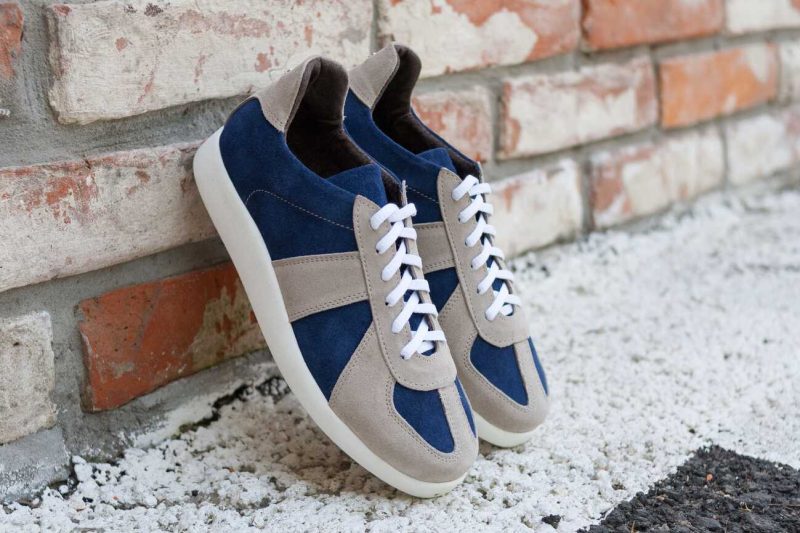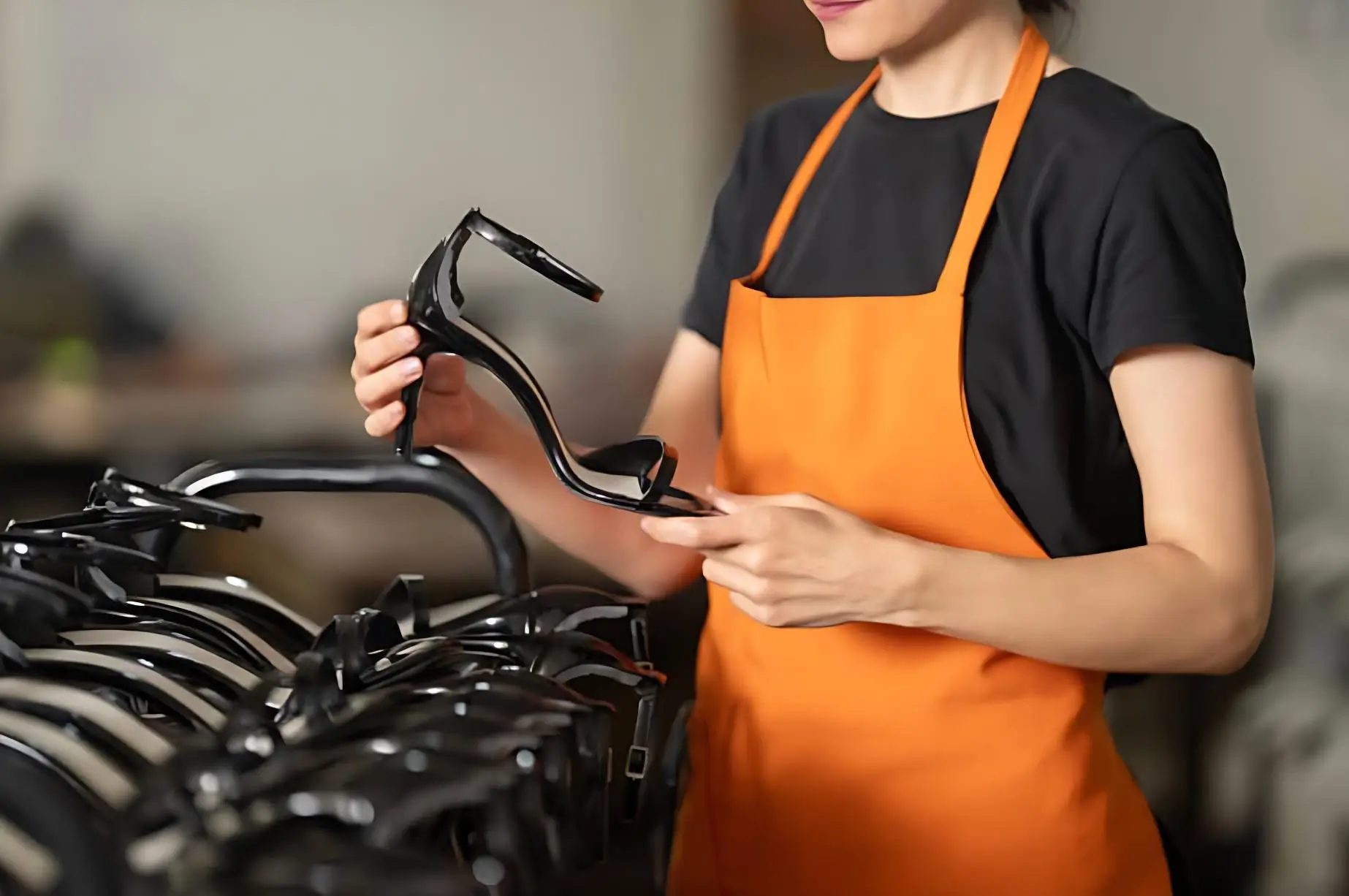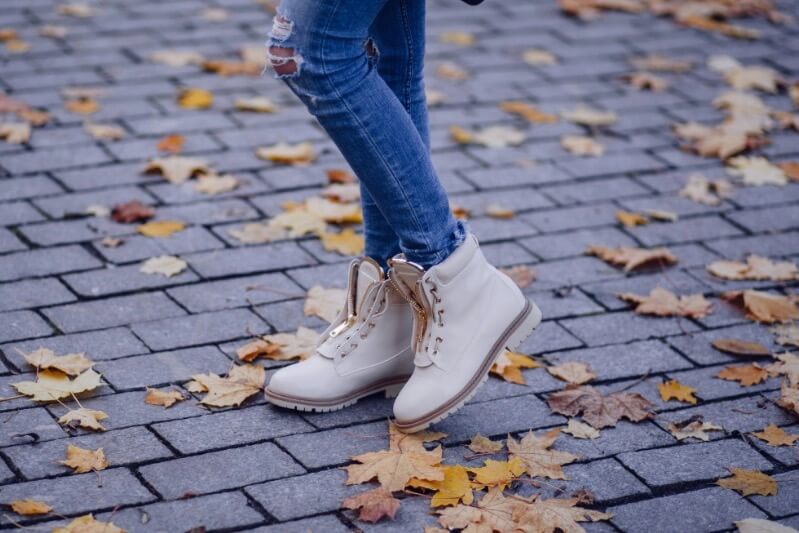As a brand owner or a buyer, do you really know what separates a good shoe from a great one? It’s not just the design. It’s the process. I’ve spent my career inside shoe factories, navigating the complexities of production, and in this guide, I’m pulling back the curtain. We’re going to go deep into the shoe manufacturing process, exploring the materials, the craftsmanship, and the cutting-edge tech that define quality in today’s fiercely competitive market.
This is the knowledge you need to make smarter sourcing decisions, avoid costly mistakes, and ultimately, build a better product that your customers will love. Ready to see what really goes into making a great pair of shoes? Let’s get started.
Why Understanding the Shoe Manufacture Process is Your Secret Weapon
In the world of footwear, what you don’t know can absolutely hurt you. I’ve seen promising brands get bogged down by production issues, simply because they didn’t have a foundational understanding of how shoes are made. Knowing the process isn’t just “interesting”; it’s a powerful business advantage.
From Cost Control to Quality Assurance: Making Smarter Decisions
When you understand the shoe manufacture process, you can have much more intelligent conversations with your factory partners.
- You Can Better Evaluate Quotes: Is that price difference between two factories due to a cheaper material, a less durable construction method, or just a lower profit margin? Knowing the process helps you ask the right questions and understand the true value of what you’re paying for.
- You Can Proactively Avoid Quality Risks: You’ll know that the precision of the cutting stage directly impacts the final fit, or that the choice of adhesive in a cemented shoe is critical for its longevity. This knowledge allows you to work with your factory to strengthen quality control at the most critical points, not just at the final inspection.
The Difference Between a Supplier and a Partner
Ultimately, when you are knowledgeable about the shoe manufacturing process, you move from being a simple “client” to a true “partner.” A factory like ours at Jinhua Shoes thrives on working with informed clients. When you understand our challenges and capabilities, we can collaborate on a much deeper level, innovating on materials, improving efficiency, and creating a truly exceptional product together. It transforms the relationship from a simple transaction into a strategic alliance.
The Core Stages of Shoe Manufacture: A Step-by-Step Breakdown
The creation of a shoe is a fascinating blend of art, science, and logistics. While the specifics can vary depending on the style, the core journey from a raw idea to a finished product generally follows these key stages.
Stage 1: The Blueprint – Concept and Design
This is where every great shoe begins—not with a piece of leather, but with an idea.
- Trend Research & Market Analysis: Designers don’t work in a vacuum. They are constantly researching fashion trends, analyzing consumer needs, and looking for gaps in the market. They’re asking questions like: “What are people looking for in a winter boot this year?” or “How can we make a running shoe more breathable?”
- Sketching and CAD Modeling: The initial ideas are brought to life through sketches. Once a direction is chosen, these sketches are translated into precise digital models using CAD (Computer-Aided Design) software. This digital blueprint defines every single curve, line, and dimension of the shoe, ensuring that the creative vision can be accurately translated into a physical product.
Stage 2: The Foundation – Materials Sourcing
The materials are the heart and soul of a shoe. Their quality dictates the final product’s durability, comfort, and style.
- The Classics: Traditional materials are still fundamental. High-quality leather is prized for its durability and ability to mold to the foot. Rubber is a mainstay for outsoles due to its excellent grip and flexibility. Canvas is a go-to for lightweight, breathable casual shoes.
- The Rise of Synthetics: Modern synthetics and textiles offer incredible versatility. They can be engineered to be waterproof, ultra-lightweight, or have specific performance characteristics, making them essential for athletic footwear.
- The Sustainability Revolution: This is one of the biggest shifts I’ve seen in the industry. There is a huge and growing demand for sustainable shoe manufacturing. This means we are constantly sourcing and testing innovative, eco-friendly materials like:
- Recycled Rubber and PET: Using post-consumer waste to create durable outsoles and fabrics.
- Plant-Based Leathers: Alternatives made from things like mushrooms, apples, or pineapples that offer a similar look and feel to traditional leather with a lower environmental impact.
- Biodegradable Fabrics: Materials designed to break down naturally at the end of their life cycle.
At Jinhua Shoes, we work with a network of trusted suppliers to source a wide range of both traditional and sustainable materials, ensuring we can meet the specific quality and ethical standards of our brand partners.
Stage 3: The Art of Assembly – Cutting, Stitching, and Lasting
This is where the shoe starts to take its physical form. It’s a stage that requires incredible precision and skill.
- Cutting: The selected materials are cut into the various pieces that will form the shoe’s upper and lining. While automated cutters are used for speed and consistency in large production runs, skilled artisans are often still needed for intricate designs or delicate materials. A miscut of even a few millimeters can compromise the entire shoe.
- Stitching: The cut pieces are then meticulously stitched together. The quality of the stitching—its density, tension, and accuracy—is a key indicator of a well-made shoe.
- Lasting: This is perhaps the most magical and critical step in the shoe manufacturing process. The stitched upper is stretched and shaped over a foot-shaped mold called a “last.” The last defines the shoe’s final shape, volume, and fit. It is the step that truly gives the shoe its soul. The skill of the lasting operator is paramount in ensuring a smooth, wrinkle-free, and perfectly shaped shoe.
Stage 4: The Final Touches – Finishing and Detailing
The shoe is now fully formed, but it is not yet finished. The finishing stage involves a series of crucial final steps that complete the product.
- Sole Attachment: The outsole is attached to the upper. This can be done through various methods, such as cementing (gluing), Blake stitching, or the highly durable Goodyear welt stitching, which allows for easy resoling.
- Finishing Room: The shoe goes through a series of final treatments. This can include polishing and conditioning for leather shoes, applying waterproof coatings, or cleaning off any excess adhesive.
- Hardware and Accessories: Laces are threaded, eyelets are secured, and any buckles, straps, or decorative elements are attached.
- Final Packaging: The finished shoes are given one last inspection, carefully wrapped in tissue, and placed in their branded shoebox, ready for their journey to the customer.
The Quality Equation: How We Guarantee Excellence at Jinhua Shoes
In the world of shoe manufacture, quality control isn’t a single step; it’s a philosophy that must be embedded in every single stage of the process. For us at Jinhua, it is our non-negotiable commitment to our partners.
Multi-Stage Inspections: Our Non-Negotiable Protocol
A final inspection is too little, too late. We believe in catching potential problems before they become big ones.
- Raw Material Inspection: Every batch of leather, fabric, and rubber that arrives at our factory is inspected for flaws, color consistency, and compliance with the technical specifications.
- In-Process Quality Control (IPQC): We have dedicated QC teams on the production floor who monitor the key assembly stages. They are constantly checking stitching accuracy, bonding strength, and lasting quality against the approved “golden sample.”
- Final Inspection: Every single pair of shoes undergoes a thorough final inspection before being packed. We check for any cosmetic defects, ensure sizing is correct, and perform a final functional check.
Beyond the Basics: The Importance of International Standards (BSCI)
For our international brand partners, especially those in the US and EU, compliance with international standards is essential. That’s why we are proud to hold certifications such as CE (for product safety compliance in the EU) and BSCI (for social compliance).
- What this means for you: These certifications are your assurance that our factory operates at a high level of professionalism. It means we have documented, repeatable processes for ensuring quality, and that we are committed to ethical labor practices and a safe working environment. It’s about building trust through transparency.
Real-World Testing for Durability and Comfort
A shoe can look perfect, but how will it perform in the real world? We conduct a range of tests to find out, including:
- Flex Testing: A machine bends the shoe thousands of times to test the durability of the outsole and the upper.
- Abrasion Testing: We test the materials’ resistance to scuffs and wear.
- Bond Strength Testing: We physically test the strength of the adhesive bond between the sole and the upper to prevent separation.
The Tech Revolution: Modern Innovation in Shoe Manufacturing
While we deeply respect traditional craftsmanship, we are also constantly embracing the new technologies that are revolutionizing the shoe manufacture industry.
The Rise of 3D Printing and Rapid Prototyping
This has been a complete game-changer, especially for our custom footwear partners. In the past, creating a new mold for an outsole was a slow and expensive process, often taking months. Today, with 3D printing, we can create a prototype of a new sole design in a matter of hours. This allows our brand partners to test and revise their ideas incredibly quickly, dramatically speeding up the development cycle and lowering the cost of innovation.
AI and Automation: The Key to Precision and Efficiency
Automation is playing an increasingly important role on the factory floor.
- Automated Cutting Machines: These machines can cut materials with incredible precision and speed, reducing waste and ensuring perfect consistency across thousands of pairs.
- AI in Quality Control: We are exploring the use of AI-powered camera systems that can inspect shoes for subtle cosmetic defects with a level of accuracy that even the human eye can’t match.
How Jinhua Blends Craftsmanship with Technology
Our philosophy is simple: we use technology to enhance craftsmanship, not to replace it. We believe the future of footwear manufacturing lies in this blend. We use automated cutters for precision, but we still rely on the skilled hands of our artisans for complex stitching and the art of lasting. This allows us to offer our partners the best of both worlds: the efficiency and consistency of modern technology, and the soul and quality of traditional craftsmanship.
Frequently Asked Questions
1. What is the most important factor for a shoe’s durability?
While the quality of all materials matters, the two most critical factors are the outsole material and the construction method used to attach the sole to the upper (e.g., a Goodyear welt is generally more durable than a standard cemented construction).
2. How does the choice of material affect the final cost?
Material choice has a huge impact. Genuine leather is typically more expensive than synthetic leather. Similarly, a custom-developed, high-performance foam for a running shoe will cost more than a standard EVA foam. We always work with our clients to find the best materials that fit their target cost and quality goals.
3. What is the difference between Goodyear welt and cemented construction?
A Goodyear welt is a traditional method where a strip of leather (the welt) is stitched to the upper and the insole, and then the outsole is stitched to the welt. It’s very durable and allows the shoe to be easily resoled. Cemented construction is a more common method where the outsole is attached to the upper using a strong adhesive. It’s more lightweight and flexible, but generally less durable than a welted shoe.
Final Thoughts: The Soul of a Great Shoe is in the Process
I hope this guide has pulled back the curtain on the incredible process behind every great shoe. It’s a journey we at Jinhua Shoes live and breathe every single day. We believe that what separates a good shoe from a great one is a relentless obsession with the details.
It’s why we combine decades of traditional craftsmanship with the latest in modern technology. It’s why our veteran QC team treats your brand’s reputation as if it were our own. And it’s why we’re trusted by leading brands across five continents. If you’re looking for a manufacturing partner who is as passionate about the process as you are about your brand, I would genuinely love to talk.
Got a project in mind? Let’s turn it into reality. Send your project details to our expert team by email to start the conversation.
📧 Email: sales@jinhuashoes.com
(You’ll get personalized expert feedback within 12 hours.)



